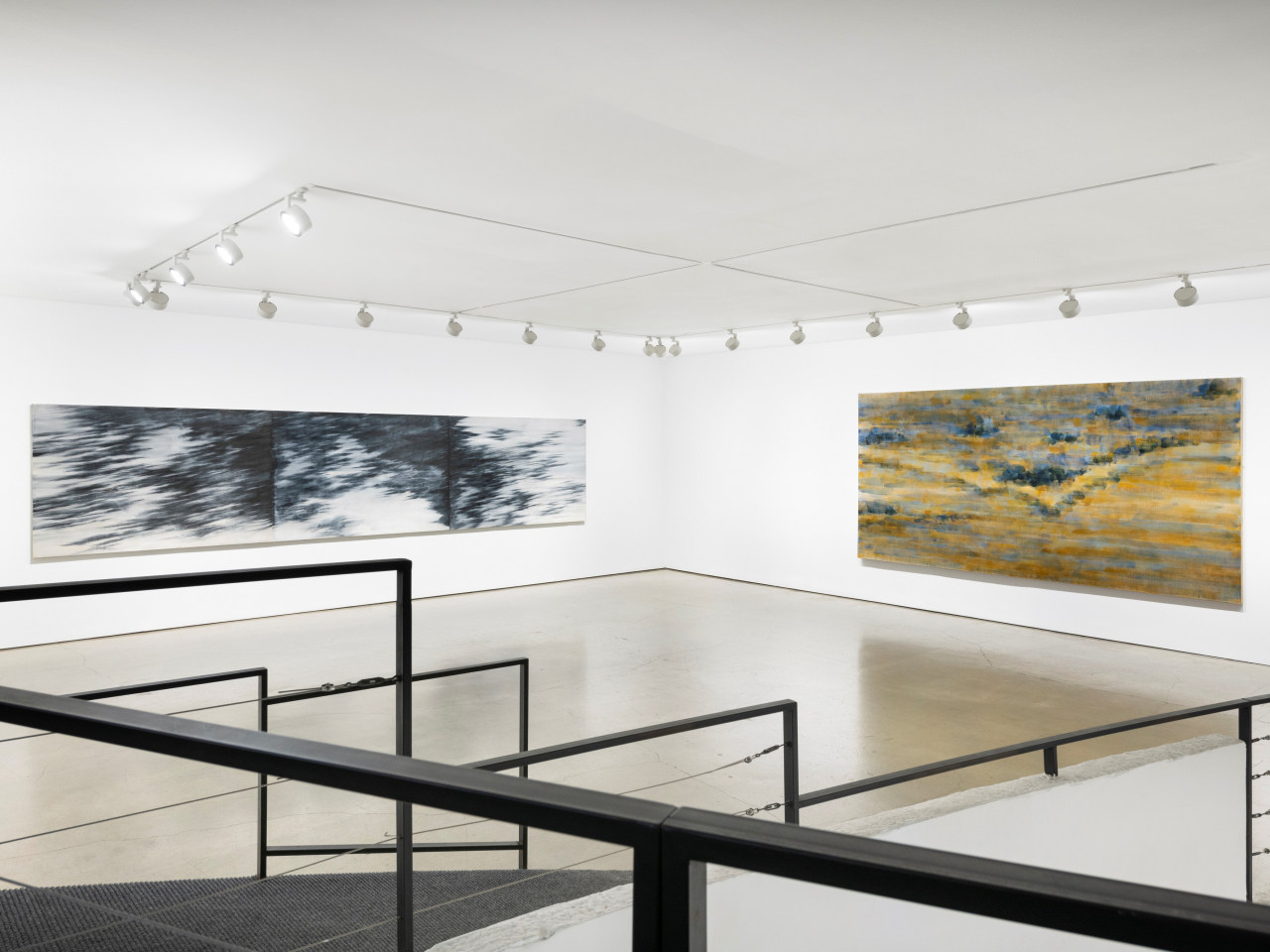 |
An installation view shows "Incorporeal Landscape" at Gallery Hyundai, with paintings by Chung Zu-young. (Gallery Hyundai) |
Sometimes one may desire to explore the type of art an artist previously pursued and examine how those past artistic practices have shaped their current art world. This notion underpins the recently unveiled “Edition R” project at Gallery Hyundai, a prestigious gallery in Seoul.
“Incorporeal Landscape,” the first edition of "Edition R," invites three artists -- Kim Min-jung, Toh Yun-hee and Chung Zu-young -- who have had a relationship with the gallery spanning decades. The joint exhibition brings together some 20 earlier works of the artists from the 1990s and 2000s under the concept of “landscape.”
“The exhibition is particularly meaningful for us and the artists that we have built a relationship for many years,” Do Hyung-teh, president of the gallery, told press on March 12.
 |
"Being" by Toh Yun-hee (Gallery Hyundai) |
The “Edition R” project -- with R referring to revisit, reevaluate, revive -- aims to revisit works of the gallery’s artists and “reevaluate their artistic effectuation from a contemporary lens and revive their past presence,” according to the gallery.
Toh’s work has been connected to the intrinsic qualities of individuals in their everyday lives, expressing private confessions of human existence concerning things that cannot be seen, but felt.
“It (bringing out old works) was almost like taking out internal organs,” Toh said. “It was an ambivalent feeling to see my past works. Sometimes you get to understand why you acted like that after many years have passed – and art is similar I think. Looking at those works from the past, I understood why I pursued such art at the time.”
 |
"Moon in the Sun" by Kim Min-jung (Gallery Hyundai) |
Chung’s paintings on display were done while the artist was staying in Amsterdam from 1995 to 1997 as well as those created in Seoul from 1998 to 1999. Chung reinterpreted the landscapes of mountains painted by old Korean art masters Kim Hong-do (1745-1806) and Jeong Seon (1676-1759) during those years.
“It is refreshing for me,” said Chung. “I was embarrassed at the same time to present my early works to the audience. It was like looking at myself in a mirror.”
Chung's paintings shown at the exhibition are the beginning of when the artist started to explore the theme of mountains for her art, according to the gallery.
Kim has used hanji, or traditional Korean mulberry paper, over the last three decades, creating works that extend the compositional lexicon of contemporary abstraction through her disciplined and reductive, yet inquisitive, approach to East Asian traditions of calligraphy and ink painting.
Kim's hanji works feature the repetitive process of burning and layering the paper. At the exhibition are her works from the mid-1990s to early 2000s finished in Italy.
The exhibition runs through April 14.







![[Today’s K-pop] Blackpink’s Jennie, Lisa invited to Coachella as solo acts](http://res.heraldm.com/phpwas/restmb_idxmake.php?idx=644&simg=/content/image/2024/11/21/20241121050099_0.jpg)